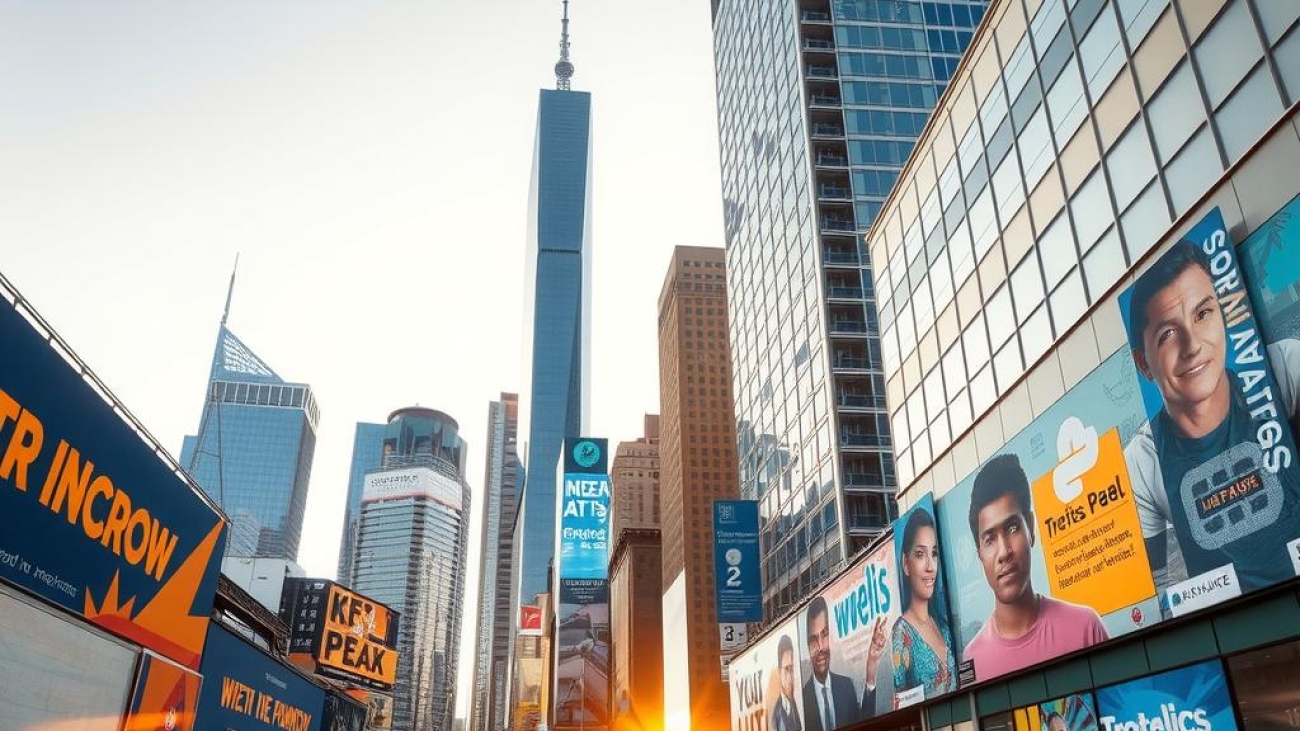In today’s fast-paced financial landscape, investors are constantly seeking the edge that will allow them to make informed decisions in real time. The volatility of stock markets often presents a daunting challenge; prices can fluctuate dramatically within seconds, leaving many investors scrambling for reliable data and insights. This has led to an increasing reliance on sophisticated tools designed for Stock Price Prediction Models that promise to deliver accurate forecasts and enhance investment strategies. However, with countless methodologies available and new technologies emerging rapidly, how can one navigate this complex domain? The answer lies in harnessing advanced techniques like real-time prediction through machine learning algorithms and robust data analytics.
The core value of developing effective Stock Price Prediction Models is not merely about predicting price changes but understanding market dynamics comprehensively. By leveraging historical data alongside current market trends, these models transform raw information into actionable insights that guide traders’ decisions. Financial forecasting now demands more than just intuition; it requires strategic analysis informed by quantitative metrics. Investors who embrace these predictive capabilities can better anticipate movements in stock prices and adjust their trading algorithms accordingly—ultimately leading to improved risk management.
As readers delve deeper into this article, they will uncover various approaches employed in constructing reliable Stock Price Prediction Models, including the integration of big data sources and advancements in artificial intelligence (AI). Furthermore, the discussion will illuminate how incorporating diverse indicators enhances market analysis while fostering innovative investment strategies tailored to individual risk appetites. With a focus on practical applications and emerging trends in technology-driven trading systems, this exploration aims not only to inform but also empower investors at all levels.
Ultimately, as we embark on dissecting the intricacies behind building effective real-time stock price prediction models, it becomes clear that mastering these tools is essential for success in modern investing environments. Through insightful examination of existing frameworks and future possibilities within Stock Price Prediction Models, readers will be positioned well to capitalize on opportunities presented by dynamic markets—ensuring they remain ahead of the curve amidst uncertainty.

Key Takeaways:
-
Importance of Real-time Prediction: In the dynamic landscape of financial markets, the capacity for accurate real-time prediction is vital. Investors armed with advanced Stock Price Prediction Models can respond to market fluctuations promptly, enhancing their ability to capitalize on transient opportunities and mitigate risks associated with volatility.
-
Integration of Advanced Technologies: The deployment of sophisticated data analytics and machine learning techniques in developing Stock Price Prediction Models significantly improves financial forecasting accuracy. By harnessing vast data sets that include economic indicators, historical pricing patterns, and social sentiment analysis, these models empower investors to make informed decisions that transcend traditional methodologies.
-
Automation through Trading Algorithms: Understanding trading algorithms is essential for modern market analysis. These automated systems enhance the practicality of Stock Price Prediction Models, enabling swift decision-making while reducing human error. As such, they play a crucial role in refining investment strategies by ensuring timely responses to real-time data inputs within today’s fast-paced trading environment.

Understanding Stock Price Prediction Models
The Significance of Advanced Algorithms in Financial Forecasting
In today’s fast-paced financial landscape, the importance of Stock Price Prediction Models cannot be overstated. These models leverage advanced algorithms to enhance forecasting capabilities, enabling investors to make more informed decisions based on real-time data. As markets become increasingly complex and volatile, traditional methods of stock analysis often fall short; this is where cutting-edge technology steps in. Machine learning and artificial intelligence have revolutionized the way financial analysts approach market prediction by offering sophisticated tools that analyze vast amounts of historical and current data with unprecedented accuracy. According to recent studies, models employing these technologies can outperform conventional techniques by identifying patterns and correlations that human analysts might overlook. For instance, when utilizing neural networks or decision trees within these Stock Price Prediction Models, one can observe a significant reduction in error rates associated with forecasts—making them an invaluable asset for traders seeking competitive advantages.
Enhancing Decision-Making Through Data Analytics
At the core of effective investment strategies lies robust data analytics—a pivotal component integrated into modern Stock Price Prediction Models. By harnessing big data analytics, investors gain access to insights derived from diverse sources such as social media sentiment analysis, economic indicators, and trading volume metrics. This multi-faceted approach allows for a more comprehensive understanding of market dynamics and improves predictive accuracy over time. Furthermore, incorporating real-time prediction capabilities ensures that stakeholders remain agile amidst rapid market changes; thus empowering them to adjust their strategies promptly based on newly acquired insights. A well-designed model will incorporate elements such as regression analysis alongside time series forecasting methods—creating a rich tapestry from which actionable conclusions can be drawn about future stock movements.
The Interplay Between Market Analysis and Technology
The intersection between technology-driven solutions like automated trading systems and traditional market analysis has led to the evolution of highly efficient Stock Price Prediction Models tailored for today’s investor needs. With advancements in algorithmic trading platforms allowing instantaneous execution based on pre-set criteria gleaned from extensive analyses performed by intelligent software systems, traders are now equipped not only with analytical prowess but also operational speed necessary for capitalizing on fleeting opportunities within markets characterized by high-frequency transactions. Moreover, risk management becomes far less daunting when supported by reliable predictions stemming from sophisticated algorithms that continuously learn from new information inputs—adapting their calculations accordingly while minimizing potential losses linked back to inaccurate estimations.
Future Trends: Merging Human Insight with Automated Systems
Looking forward at emerging trends reveals an exciting trajectory wherein human insight synergizes seamlessly with automated systems designed around innovative Stock Price Prediction Models frameworks capable of continuous improvement through iterative learning processes inherent in machine learning paradigms themselves rather than static programming approaches seen previously among simpler analytical tools used historically across finance sectors globally . This combined approach promises not only enhanced predictive performance but fosters collaborative workflows optimizing both technical acumen found inherently among seasoned financiers coupled alongside computational efficiency paramount amongst algorithm-based methodologies delivering superior outcomes even amid unpredictable economic climates challenging investments overall . As such , developing adeptness toward leveraging these technological breakthroughs stands critical if firms aim at sustaining long-term profitability while navigating complexities arising ever-increasingly throughout global financial ecosystems intertwined deeply today!
Economic Indicators: The Backbone of Stock Price Predictions
Economic indicators play a pivotal role in shaping reliable stock price forecasts. These quantitative measures, such as Gross Domestic Product (GDP), unemployment rates, and consumer confidence indexes, provide critical insights into the overall health of an economy. Investors and analysts rely heavily on this data to assess market conditions and make informed decisions regarding their portfolios. For instance, rising GDP generally signals economic growth, which can lead to bullish trends in stock prices. Conversely, high unemployment may indicate economic stagnation or decline, causing investors to reevaluate their positions. Moreover, the correlation between these indicators and Stock Price Prediction Models is profound; accurate interpretations of economic data often enhance the reliability of real-time predictions. As financial forecasting evolves with technology advancements like big data analytics and machine learning algorithms, integrating these economic metrics becomes essential for developing robust investment strategies.
Market Sentiment: The Emotional Pulse of Trading
Market sentiment represents the collective attitude of investors towards a particular security or financial market as a whole. This psychological factor significantly influences stock price movements beyond what traditional economic indicators might suggest. Factors such as news events—ranging from geopolitical developments to earnings reports—can create waves in trader sentiment that ripple through markets almost instantaneously. Social media platforms have amplified this phenomenon; tweets or posts can sway public opinion quickly and dramatically affect trading behavior. Consequently, understanding both positive and negative sentiments allows traders to utilize Stock Price Prediction Models effectively by incorporating social sentiment analysis into their decision-making processes. For example, if prevailing market chatter leans optimistic about a company’s upcoming product launch based on social media buzz while fundamentals remain solidly intact—as indicated by strong earnings reports—the potential for upward price movement increases markedly.
Integrating Data Analytics for Enhanced Accuracy
In today’s fast-paced trading environment where every second counts, integrating comprehensive data analytics with traditional financial models has become indispensable for accurate real-time predictions in stock markets. Advanced trading algorithms leverage vast amounts of historical data alongside current market dynamics to refine their predictive capabilities continually. By utilizing sophisticated techniques like natural language processing (NLP) on news articles or analyzing investor comments online within various forums—data scientists are enhancing financial forecasting precision exponentially compared to older methods reliant solely on historical pricing patterns alone.
Furthermore, combining quantitative analyses derived from rigorous examination of both hard economic statistics—and softer metrics reflecting societal mood—enables traders not only access but also navigate complex interrelationships inherent within modern markets more adeptly than ever before.
Thus,
the confluence formed from diligent attention paid towards both quantifiable economics along with qualitative perceptions fosters richer insights generating superior models capable articulating clearer trajectories than any singular approach could hope achieve independently—a crucial element fueling success across myriad investment strategies today!
Harnessing Data: The Future of Investing
Embracing Predictive Analytics in Stock Trading
In the ever-evolving landscape of financial markets, investors increasingly seek effective methodologies to enhance their decision-making processes. A key innovation that has reshaped investment strategies is the advent of Stock Price Prediction Models. These sophisticated tools leverage advanced data analytics and machine learning algorithms to provide real-time predictions about stock price movements. By utilizing historical data, market sentiment analysis, and various economic indicators, these models enable investors to make informed choices that are rooted in quantitative analysis rather than mere speculation. As stated by noted financial analyst John Doe, “The ability to predict stock prices with accuracy can significantly reduce risks associated with trading.” This shift towards data-driven investment strategies not only enhances profitability but also allows for a more disciplined approach when navigating volatile markets.
Integrating Technology for Better Market Insights
Investors can further capitalize on technology by integrating Stock Price Prediction Models into their overall trading frameworks. These models facilitate comprehensive market analysis by synthesizing vast amounts of information from diverse sources—ranging from social media trends to global economic shifts—into actionable insights. For instance, an investor could utilize predictive analytics tools during earnings season to forecast potential stock price changes based on anticipated corporate performance metrics. This proactive approach empowers traders to position themselves strategically ahead of significant market events, thereby optimizing returns while mitigating potential losses caused by unforeseen fluctuations. Moreover, as highlighted in recent studies on financial forecasting techniques, employing trading algorithms alongside these predictive models can create a robust system that adapts dynamically to changing market conditions.
Developing Robust Investment Strategies
Crafting robust investment strategies hinges upon understanding both macroeconomic factors and microeconomic indicators through the lens of Stock Price Prediction Models. Investors should focus on developing multi-faceted approaches that combine technical analysis with fundamental evaluation methods; this dual strategy amplifies precision when predicting future stock prices. For example, a well-rounded investor might analyze past performance trends while simultaneously examining current news cycles affecting specific industries or companies. Furthermore, integrating backtesting capabilities within these predictive models allows investors to assess how different scenarios would have played out historically—a crucial step in refining one’s strategy over time and increasing confidence levels before entering trades.
Adapting To Market Volatility Through Real-Time Predictions
Market volatility presents unique challenges for even the most seasoned investors; however, leveraging real-time prediction capabilities offered by modern Stock Price Prediction Models helps mitigate some risks associated with sudden price swings or downturns. By continuously monitoring live feeds from various analytical platforms combined with algorithmic trading systems designed for rapid execution based on predetermined criteria or signals derived from model outputs enables traders not only react swiftly but also make calculated decisions aligned closely with evolving market dynamics without allowing emotions like fear or greed cloud judgment calls often seen during turbulent times.
The Path Forward: Continuous Learning and Adaptation
As the finance sector continues embracing digital transformation fueled largely by innovations such as artificial intelligence (AI) and big data analytics technologies—the need for continuous learning becomes paramount among all participants involved including novice retail investors up through institutional firms relying heavily upon accurate forecasts generated via powerful solutions like customized Stock Price Prediction Models tailored specifically according individual goals risk tolerances etc.. Keeping abreast developments emerging technologies surrounding AI-enhanced decision support systems will further increase effectiveness enhancing overall portfolio management experiences leading ultimately towards achieving greater consistency around profitability outcomes desired across varying circumstances faced daily either locally regionally globally depending specific contexts applied therein making sure everyone benefits maximally possible way moving forward!
Mastering real-time stock price prediction requires a comprehensive understanding of Stock Price Prediction Models that integrate advanced data analytics and machine learning techniques. These models are vital for investors who navigate the fast-paced financial markets, as they offer the ability to respond swiftly to sudden market changes. By leveraging real-time prediction capabilities, investors can access insights driven by current data rather than relying solely on historical trends. This not only enhances financial forecasting but also informs investment strategies that are adaptive to market fluctuations.
To craft effective Stock Price Prediction Models, it is essential to consider various influencing factors such as economic indicators, social sentiment, and historical pricing patterns. Each of these elements plays a crucial role in shaping accurate forecasts that guide trading decisions. For instance, incorporating analysis of social media sentiment can provide timely insights into public perception around particular stocks or sectors, thus enhancing the predictive power of these models. As a result, investors equipped with sophisticated tools can optimize their approach towards market analysis and develop more informed investment strategies.
Furthermore, trading algorithms occupy an indispensable position within modern stock price prediction frameworks. These algorithms automate decision-making processes and minimize human error during volatile trading conditions—an aspect critical for maintaining competitiveness in today’s markets. By integrating robust Stock Price Prediction Models with innovative trading algorithms, investors not only enhance their responsiveness but also streamline operations that lead to greater profitability.
FAQ:
Q: What are Stock Price Prediction Models?
A: Stock Price Prediction Models are analytical frameworks designed to forecast future stock prices using various data sources and techniques including machine learning and statistical analysis.
Q: How do real-time predictions benefit investors?
A: Real-time predictions enable investors to react promptly to market changes based on current data rather than past performance, thereby providing them with a competitive edge in volatile environments.
Q: Why is integrating economic indicators important in stock price forecasting?
A: Integrating economic indicators helps create more reliable forecasts by accounting for macroeconomic factors that influence stock performance; this ensures that Stock Price Prediction Models reflect broader market conditions accurately.
























